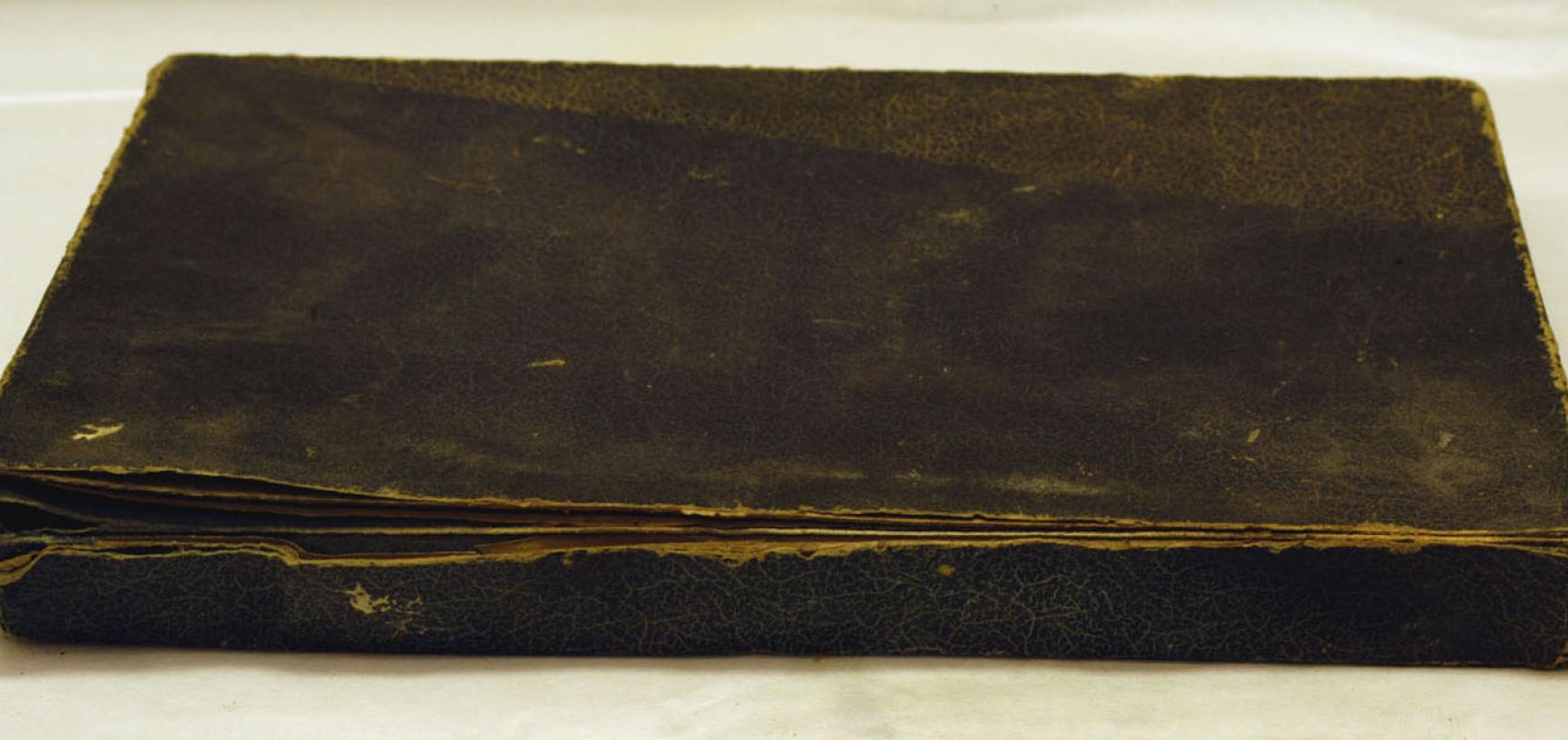Conservation case study: a wet and mouldy chemistry set
The chemistry set was manufactured by F. Kingsley of London and consists of a compartmentalised cardboard box with wool pads in the two small rectangular compartments, and has cotton tape hinge supports. It contains 14 small round tubs of common chemicals,
a glass test tube, blow tube, stirring rod and a cork bung, as well as four glass phials and two rectangular boxes containing chemicals. The accompanying booklet of instructions describes forty easy experiments. Chemical cabinets were commonplace
by the middle of the 19th century, with this particular set dating from around the 1920s.
Inventory number: 92768
Due to the adverse conditions and a series of events this object had been subjected to, the cardboard box was delaminating and falling apart, with white mould growing between the layers of cardboard and paper. Added to this, one of the tubs containing carbon powder had leaked all over the interior, covering all the contents. The glass phials, other glass apparatus, rectangular boxes and the cork bung were soiled with carbon powder. The glass stirring rod was broken, with two pieces remaining, but it would appear a small section of it was actually missing. One pot containing iron filings had corroded into a solid mass, and those that were still loose were falling out of gaps in the base of the tub.
The contents were removed and the loose carbon particles removed first using a micro-vacuum, and then further cleaned using a vulcanised rubber sponge. Areas of mould were removed using the same process after donning a suitable face mask.
Repairs to the box were then undertaken using appropriate materials and adhesive, using glass and lead shot weights to keep the treated areas flat until the adhesive had dried. Repairs had to be staged: one side was attended to first, weighted if necessary until dry, and then the other side attended to. This ensured a solid and close repair. Any exposed repair materials were toned down using gouache pigments. Finally, the loose piece of cotton tape was repositioned back into place on the right hand side of the box.
Damaged tubs were emptied of any remaining contents, cleaned and repaired in the same manner as the main box, while the glassware was cleaned using a solution of water and alcohol.
Finally, to prevent further soiling from the carbon powder, the powder remaining in the appropriate tub was removed and placed within a twist of acid-free tissue. The interior of the tub cleaned out, and the tissue twist inserted into the tub.
All the contents were replaced into the box and the object returned to storage.
















